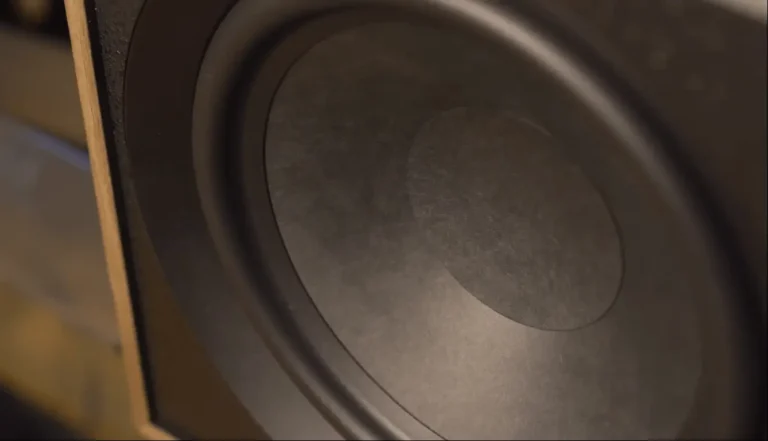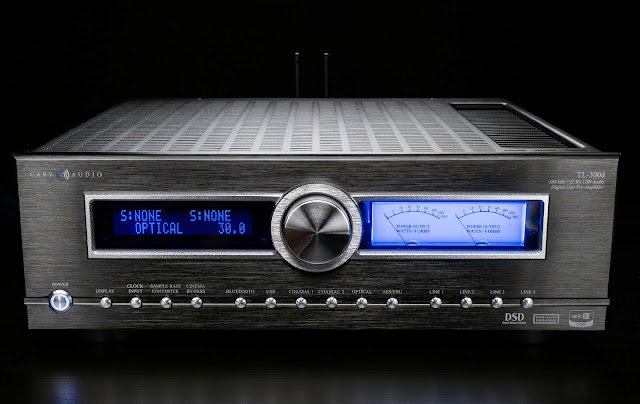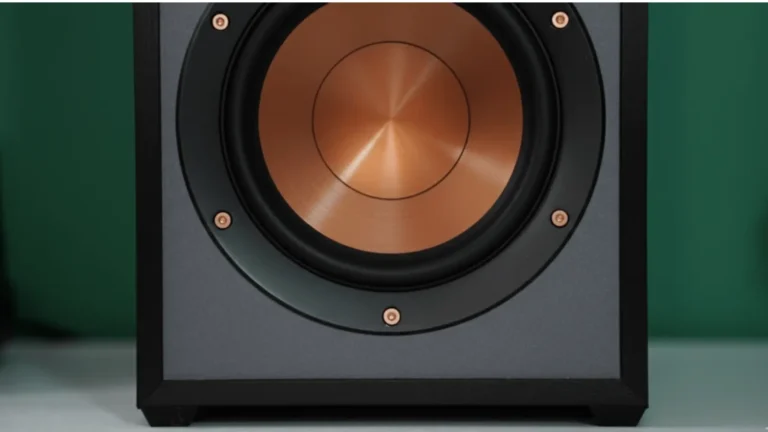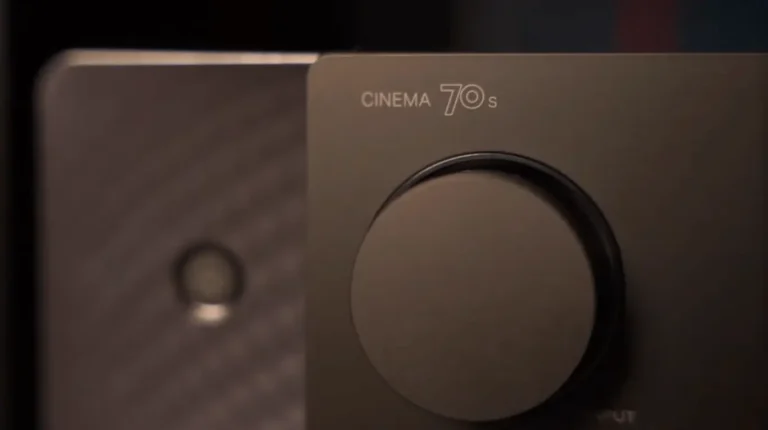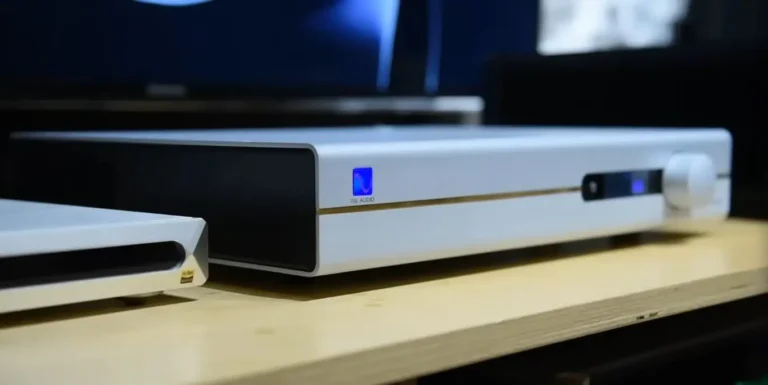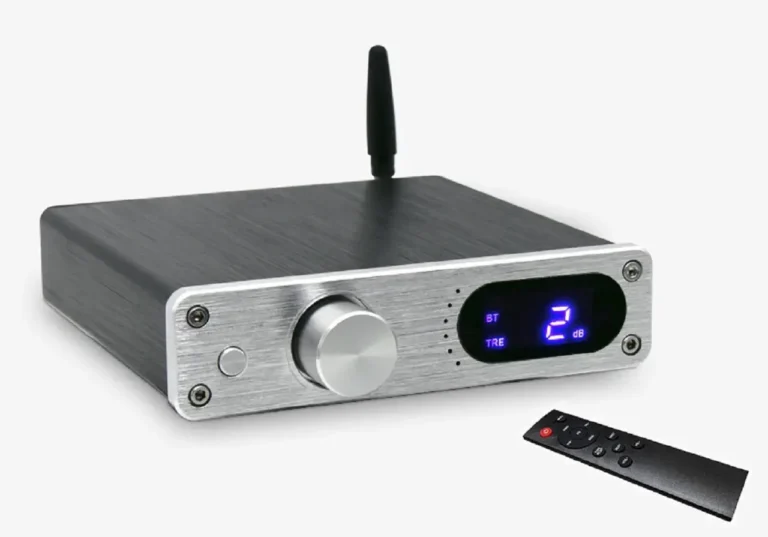ELAC Varro RS500 Reviewed: A Powerhouse of Clarity and Depth
ELAC Varro RS500: Technology moves fast these days, spreading even faster. Once one audio company started using computer modeling and laser measurement systems, almost everyone stopped making speakers the old-fashioned way. New features in components seem to pop up at the same time, and the same goes for new codecs, interfaces, streaming services, and other trendy stuff.
This happens because most technologies are developed by third-party companies and then made available to all manufacturers at once. Good examples include Linkplay with their streaming modules, Dirac with their auto-calibration tech, and well-known names like Dolby and DTS, which offer sound processing solutions for speakers, headphones, and even smartphones.
And, of course, numerous chip manufacturers, such as ESS Technology, Asahi Kasei, Texas Instruments, Analog Devices, XMOS, Qualcomm, and others, whose products are used by literally everyone. For this reason, some new technologies, especially those implemented at the chip or software level, are not particularly surprising. Something new is appearing – and you can be sure that if not today, then very shortly, a good half of the brands will have the same thing.
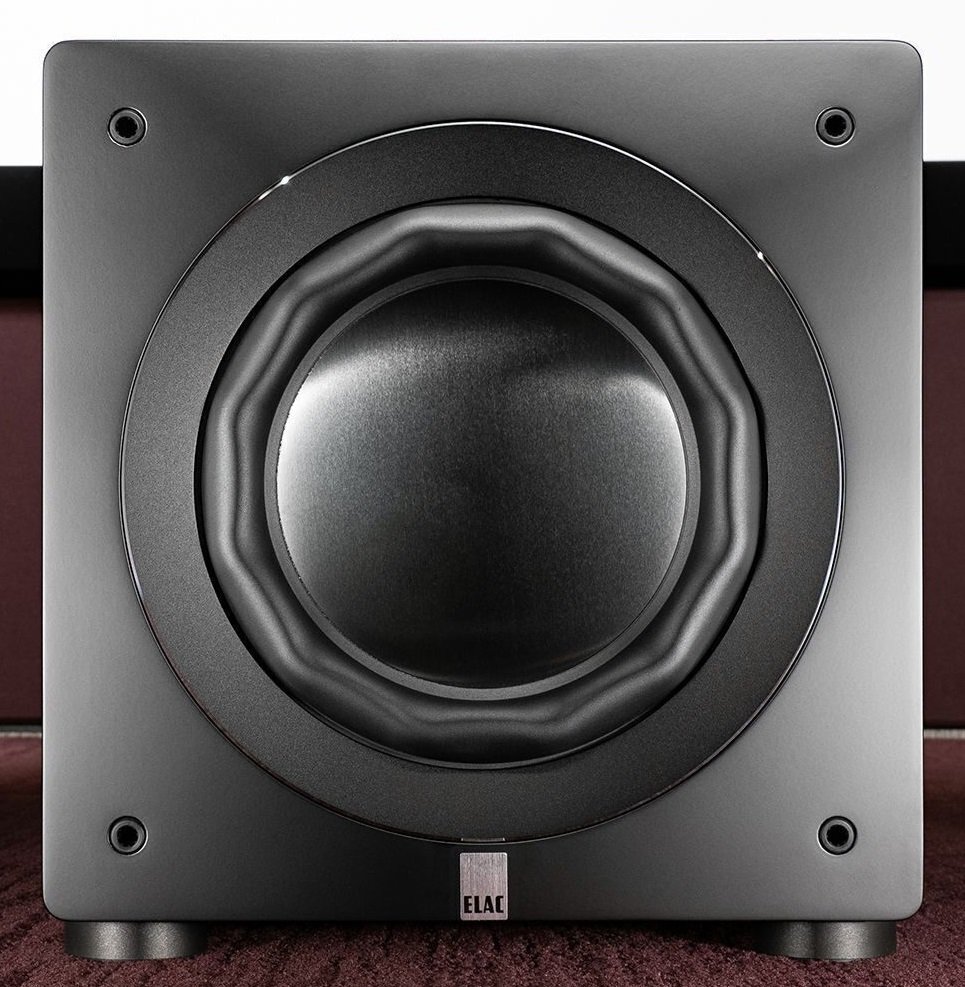
But suppose the technology developer is himself an active player in the Hi-Fi market. In that case, the situation changes dramatically: his know-how creates a unique competitive advantage, which makes no sense to share. This is exactly the path taken by ELAC, which has many original technologies. For example, coaxial speakers with AMT tweeters and complex aluminum sandwich diffusers with a “crystalline” surface. This time, we will turn to a technology that is not so noticeable and popular, but its importance is difficult to overestimate. A living example for us will be the ELAC Varro RS500 subwoofer.
Check Out: KEF Q950 Review
Technology Behind the ELAC Varro RS500 Subwoofer
ELAC’s core subwoofer technology is not new, and its implementation is the third generation. But since it is being developed by one company, it has not yet gained popularity among the masses. We are talking about a revolutionary approach to subwoofer tuning.
How do we usually do this? We are looking for the optimal location in the room so that there is less buzzing and resonating, and then we run back and forth, first to the subwoofer to turn the knobs, then back to the listening position to hear the result. And so many times until you achieve the ideal (or at least acceptable) setting.
More advanced models of subwoofers have remote control from a remote control (which is more common now) through an application, which at least saves you from running around. And the very advanced ones have not only a cutoff frequency regulator, but also an equalizer that allows you to cut out 1-3 resonant peaks, or are equipped with preset room correction modes such as “in the corner”, “near the wall”, “in free space”.
In a home theater, the process is somewhat simplified due to the auto-calibration system of the AV receiver, which itself will tweak something there to make it good (or, again, acceptable), after which you will need to turn up the sound in manual mode.
ELAC developers have combined all the best and most convenient technologies into one technology, added the ability to fine-tune the sound required by professionals, but at the same time simplified the process of use to such a degree that even those who have never set up subwoofers in their lives can use it.
Branded subwoofers have full remote control from the application, a built-in multi-band equalizer, a set of standard manual settings, and an auto-calibration function. This is implemented as follows: a powerful and fast DSP is built into the subwoofer, and the application is used for everything else. The current version is called ELAC Sub Control 3.0.
ELAC Varro and the Future of Smart Subwoofer Calibration
If you are a beginner, then the algorithm of actions is extremely simple: place the subwoofer where it will stand during operation, and launch the auto-calibration system in the application. The application will ask you to bring your smartphone microphone to the subwoofer speaker to take the first measurement, at the point where the influence of the room is minimal.
Then, sitting in the place where you will listen to the system, take a second measurement. By comparing both options, the system will eliminate the negative impact of reflected sound, bringing the sound at the listening point, if possible, to what was recorded near the speaker. This is how Auto Room EQ technology works, providing automatic room correction.
For the pros, there is a manual mode with an eight-band equalizer that has amplitude and sampling width adjustments, and, of course, standard settings for frequency, phase, and volume are also available. All this can be done on top of the calibration. Foreign colleagues have even found the ability to download correction curves obtained using professional measuring equipment, which should provide precise adjustment accuracy. And from one application, you can control several subwoofers, which can be useful when working with a large cinema hall.
In general, the usefulness and uniqueness of Elak’s subwoofer tuning technology can hardly be overestimated. Not only does it adjust automatically, but it is also possible to adjust the equalizer without getting up and assessing the result in real-time.
It would seem that a subwoofer with such capabilities should be selling like hotcakes, but how many such subs have you met? So, before I got acquainted with ELAC Varro, one of the “smart” models of this brand, I only tested the Sub 2010, which, although advanced, is still an ultra-compact lifestyle model; the main task is to fit beautifully into the interior and amaze a potential buyer with its versatility.
I must admit that the Sub 2010 amazes me with its installation versatility and produces good sound for its form factor. However, a seasoned audiophile and an experienced film fan will not even look in the direction of such a “toy”. Other ELAC subwoofers are, again, either an unusual type of lifestyle or their direct opposite: very brutal-looking designs with metal grills. In a word, nothing classic, familiar or traditional in appearance. The new Varro line aims to correct this situation.
History ELAC Varro RS500
The history of the Varro line is quite simple. Having played enough with the technological part and brought the ELAC Varro RS500 Sub Control application to the state of an advanced and fast-working third version, the developers finally thought about what to integrate it into so as not to lose face. They say that a specialist and experienced subwoofer developer from a very well-known company was invited to create the acoustic part of the subwoofers. They don’t specify which one exactly, but our audiophile brother has a rich imagination…
As a result, as many as three series of subwoofers were born, including the Varro line. The youngest is Premium with a simpler finish and speaker, bass reflex design, and driver calibers of 10, 12, and 15 inches. A more advanced series is Reference, which we are about to get to in detail; it is based on the original driver, has a closed and richer-looking housing, but is offered only in sizes 10 and 12 inches (which is due to the design of the driver).

The top-end version, Dual Reference, is essentially the same Reference but combines two subwoofers in one large (and for some reason glossy) housing of an unusual trapezoidal shape. The available driver calibers are the same, 10 and 12 inches, but there are two speakers. Accordingly, Dual References are needed in situations where it is clear that one Reference will not be enough, and they primarily allow you to save money and space in the room. The sound is approximately the same, adjusted for scale.
Reference
The approach to creating the acoustic part of the Varro Reference subwoofers looks very uncompromising. To begin with, the enclosures are made of 35 mm-thick MDF boards with internal partitions and stiffeners, which makes them heavy and acoustically inert. The cases have powerful legs with rubber pads. The delivery set also includes spikes, for which there are threaded bushings directly in the legs. Spikes will be needed if there is something soft on the floor – a carpet or rug.
The speaker is, without a doubt, the main decoration of the older ELAC subwoofers. The diffuser is made using proprietary aluminum-paper sandwich technology, creating a lightweight and extremely rigid structure with good internal damping. The original “hexagonal” HEX suspension is necessary to ensure piston operation.
During the research, ELAC developers concluded that a suspension with a conventional semicircular profile does not ensure perfectly smooth movement of the diffuser along the axis, and additional folds of the suspension act as stiffening ribs that prevent the diffuser from moving to the side even with a large amplitude of movement. Further in the design, everything is quite familiar: a long coil, a massive ferrite magnet, a cast, extremely rigid cast basket.
Strengthening is another pride of ELAC. Branded subwoofers have long been using BASH amplifiers, the circuitry of which has been refined and improved by the company’s engineers. At their core, BASH amplifiers are a variation of Class H, in which the amplifier’s supply voltage is also modulated by the incoming signal, resulting in a dynamic range that is multiples greater than that of the same amplifier with a constant voltage supply.
In the BASH circuit, the amplifier through which the useful signal passes operates in class AB, which gives a more “analog”, solid, and pure sound, and the power supply is switching. That is, in essence, a class D amplifier is responsible for the power supply, which, as is known, responds faster than others to sharp signal peaks and, in this case, provides excellent dynamics.
Switching the Varro Reference series is also not as simple as it might seem. RCA inputs make it possible to feed it both a stereo signal from a preamplifier and LFE from an AV receiver. Hidden inside the case is a second, wireless “input” that works with proprietary ELAC AirX2 transmitters.
It is noteworthy that up to three subwoofers can be connected to one transmitter, so a wireless connection method can be a real salvation when equipping a large home cinema room, when you need to install several subwoofers at a considerable distance from each other, and the cable line around the perimeter of the room is very long. The top-end Dual Reference version has an additional balanced input to solve this problem, but that’s a completely different story.
And finally, the third connection method is high-level, which can also be very useful. Let me take this opportunity to remind you exactly why it is useful. The most important and obvious thing is that this may be the only way to connect a subwoofer if the preamplifier or device performing this role does not have adjustable inputs so that low-level signals can be removed from them.
The second plus is the ability to maintain a uniform sound character in the system, which is especially important if the crossover frequency is high, and the amplifier that works with the main stereo pair has a pronounced character in the low-frequency range. High-level inputs will help transfer the sound character of the amplifier to the subwoofer, while using low-level switching, the sub may deprive the system of the desired sound signature.
Sound Quality ELAC Varro RS500
I conducted testing not in a showroom, but in a home environment, to understand how effective the subwoofer would be in an ordinary apartment without any serious acoustic preparation. All listening was carried out in triphones format with small DALI Mentor Menuet bookshelf speakers, not particularly effective in the bass range, and vintage TDL Line 2 floor standing speakers, which have an acoustic design of the “transmission line” type and in my 25 squares they are so bassy that I don’t think about the need to connect a subwoofer does not arise.
Naturally, I started with calibrating and tuning the subwoofer. Having carried out almost a dozen calibrations with the location of the subwoofer in both optimal and unsuccessful places, I can say that Auto Room EQ allows you to place the subwoofer where it will look beautiful and not interfere, without thinking too much about resonances and other problems. The main peaks/dips that color the sound are leveled out by calibration.
But if you want to get the most out of it and get a true low-frequency miracle in a single apartment, first use the standard recommendations for installing a subwoofer, then carry out calibration, and finally, using a tone generator and built-in equalizer, you can bring the result to perfection by ear. The beauty of auto-calibration is also that it allows the user to roughly adjust the cutoff frequency – the auto-calibrator will “hear” the excess and cut it.
When connected to bookshelf speakers, the sound of the system changed dramatically, because several tens of hertz appeared in the frequency response, and with a decent sound pressure. On metal, the ELAC Varro RS500 demonstrated an excellent rate of fire, elasticity, and clarity of bass, and the subwoofer got a decent part of this range!
At the same time, in jazz, long, booming double bass notes with quite realistic reverberations and overtones of the instrument’s soundboard were worked out without any difficulty and with impeccable accuracy. On dance electronics, the feeling of a large-scale club sound was fully conveyed, and if you turn the volume knob, the bass could be felt physically.
With floor-standing speakers, the situation was somewhat different. Formally, the subwoofer added only a few of the lowest notes, and it cannot be said that when it is turned on, some new sounds and bass lines become audible in compositions that were not noticeable before, as was the case with bookshelf speakers. But the feeling of speed, dynamics, scale of the sound picture, and the overall effect of presence changed significantly as soon as the ELAC Varro RS500 came into play. Curiously, this influenced even music in which the low end was not written particularly deeply, for example, the jazz standards of the fifties.
Well, as a cherry on the cake. When we are already convinced that the subwoofer can be precisely tuned and matched with literally anything, let’s also pay attention to the fact that the application allows you to select one of four sound modes. Flat is a mode for perfectionists, without any coloring of the sound. Cinema is for film buffs who are accustomed to more booming, powerful and booming bass. Music adds bass more delicately and rather in the middle part. And, finally, Night is for lovers who watch movies and listen to music at night. Why not?
Conclusion:
Getting to know the ELAC Varro RS500 was another clear reminder of the idea that “a subwoofer is never unnecessary.” But this only holds if, first, it’s perfectly tuned, and second, it delivers high-quality, deep bass without distorting or muddying the sound. The ELAC Varro RS500 checks all these boxes. While some competitors might offer decent sound quality, I’ve never seen a subwoofer with as many customization options as the ELAC Sub Control app provides. It’s truly in a league of its own.
All that remains is to virtually applaud the developers and continue to wonder why such a solution has not yet spread everywhere. Competitors could, if not buy, then at least try to do something similar.
Pros And Cons
Pros: Convenient control, auto-calibration system, accurate and fast sound, spikes included
Cons: Nothing At This Price
ELAC Varro RS500 subwoofer PRICE
The Price for the Elac Varro RS500 is $12,998.98
ELAC Varro RS500 Subwoofer Specifications
Driver: 10 inches, aluminum-paper sandwich with HEX suspension
Frequency range: 17-150Hz
Sound pressure: up to 108 dB
Crossover Settings: 40-150 Hz
Output power: 500W
Amplifier type: BASH
Inputs: 2x RCA, high-level, wireless module
Additional interfaces: LAN (control), 12 V trigger, USB-A (firmware update)
Dimensions: 381x360x387 mm
Weight: 20.8 kg


